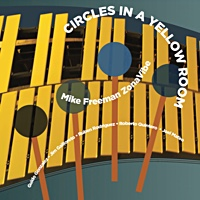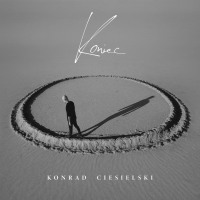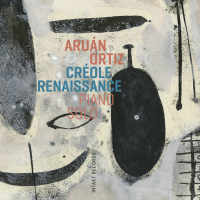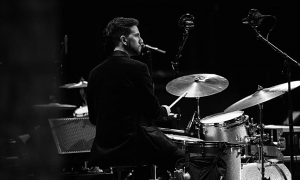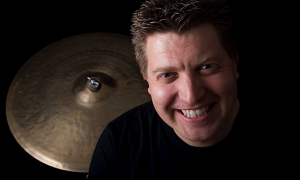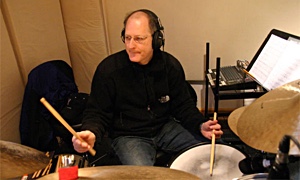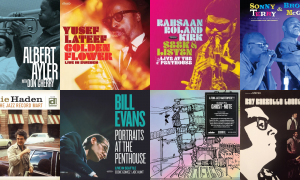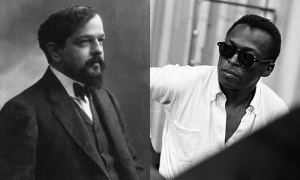Home » Jazz Articles » Rhythm In Every Guise » Billy James
Billy James
 Despite the fact that he never clamors for attention and seldom takes a solo, Billy James has a distinctive style of drumming that flourishes in the confines of the soul jazz idiom. His discography largely consists of recordings in the company of the legendary organist Don Patterson, along with other expansive, go-for-broke players like Sonny Stitt and Booker Ervin. Taken in its entirety, James' recorded output reveals a restless, unpredictable musician who is equal to his high profile associates. Unlike the multitude of obstinate young drummers who refuse to yield, James relishes the challenge of interacting with others, instantaneously responding to any change of course with wit and invention. While consistently offering a strong, steady pulse, he simultaneously improvises in the moment, shunning clich's, avoiding monotony, and invariably finding fresh ways to keep bands moving.
Despite the fact that he never clamors for attention and seldom takes a solo, Billy James has a distinctive style of drumming that flourishes in the confines of the soul jazz idiom. His discography largely consists of recordings in the company of the legendary organist Don Patterson, along with other expansive, go-for-broke players like Sonny Stitt and Booker Ervin. Taken in its entirety, James' recorded output reveals a restless, unpredictable musician who is equal to his high profile associates. Unlike the multitude of obstinate young drummers who refuse to yield, James relishes the challenge of interacting with others, instantaneously responding to any change of course with wit and invention. While consistently offering a strong, steady pulse, he simultaneously improvises in the moment, shunning clich's, avoiding monotony, and invariably finding fresh ways to keep bands moving.The cornerstone of James' style is a singular sound on the ride cymbal, which always points the way and provides continuity regardless of the kind of ensemble he's playing in. It cuts through the organ, electric guitar, as well as Stitt's frequent use of an amplified Varitone saxophone. At slow to medium tempos, the cymbal's timbre has weight and seems to expand; at faster tempos it's springy and nimble. He has a knack for wiping the slate clean at the beginning of everyone's solo by striking it in such a way that the music sounds reinvigorated. In contrast, James uses the other components of his set primarily for commentary and surprise. The pithy snap of the snare drum, and the stout, muffled thump of the bass drum supply the right amount of opposition to the cymbal's constancy.
A good example of James' practice of inserting concise, adroitly timed eruptions in the midst of a sustained groove occurs on "C-Jam Blues" (Sonny Stitt/Booker Ervin/Don Patterson, Soul People, Prestige). For an extended period during Booker Ervin's solo, he stays in the background, playing straight time while Patterson repeats and gradually increases the loudness of a vigorous, five-chord riff. Sensing that the organist is about to let go of the pattern, James jumps in with an abrupt, three stroke fill that brings out something ferocious in Ervin. Hard hits to the bass and snare immediately follow, and the music briefly turns into a shoving match. The clamor only lasts for about four measures after which the drummer retreats to his usual, non-combative position, continuing as if nothing cataclysmic occurred.
During Stitt's four-minute, 15-chorus solo on the same track, James asserts himself in a less dramatic, yet nonetheless telling fashion. Ever mindful of what Patterson and Stitt are up to, he converses with them in ways that are both supportive and unexpected, while at times flashing an independent streak. During several of the tenor saxophonist's thoughtful passages, James seldom makes a remark, often leaving open space untouched. In other instances he delights in jamming intricate combinations of rhythms into a measure or two. One example sounds like someone falling down a flight of stairs; another consists of a noisy, single stroke roll on the snare followed by near silence. Throughout Stitt's entire solo you never know when James is going to strike, for how long, and in what manner Moreover, the drummer picks and chooses times to fortify Patterson's recurrent riffs. Sometimes he barely comments at all, or lets an entire chorus go by before augmenting the organist's phrase with insistent smacks to the snare and bass drum.
The results are nothing short of spectacular when James abandons his customary restraint during two medium-fast cuts from The Boss Men (Prestige). On "Diane" and "Easy To Love" his ride cymbal is as regular and imposing as ever, but now the snare demands equal attention. Snapping and scraping against the drumhead, James' left stick seems to have a mind of its own, never foreshadowing the next move, and relentlessly pushing and pulling against the beat as if to mock the cymbal's stability. The most impressive thing about these sustained bursts of activity isn't the independence of his limbs; it's his ability to goad Stitt and Patterson without any lapses in taste. No matter how busy James gets, he always stays in touch with and acknowledges the others.
The antithesis of his bustling efforts on these fleet tracks, "Mud Turtle" (Sonny Stitt & Don Patterson, Brothers-4, Prestige) is nonetheless one of James' finest recorded performances. A blues taken at a snail's pace (which is notoriously difficult to sustain without rushing or dragging), and including a couple of double-time segments, the situation demands less embellishment and more self-control. James' drumming is all about subtle variations in texture, and small, unpretentious gestures. The centerpiece of his less-is-more approach is four, perfectly placed quarter notes per measure on the ride cymbal that resound in a clean and distinct way. There are long stretches when he presses the hi-hat pedal off of the beat (as opposed to the traditional 2 and 4), producing a slight, clinking sound that barely registers in the listener's consciousness. Occasionally he shakes things up by emitting a long roll at the end of a chorus, or a peculiar, twisting fill behind Patterson and Stitt's solos. Overall, James' playing is discriminating and discreet.
SELECTED DISCOGRAPHY
Gene Ludwig, The Groove ORGANization (Blues Leaf, 2002) Review
Sonny Stitt, "Live" At The Left Bank (Label M, 1971) Reviews: 1 2 3
Sonny Stitt/Don Patterson, Legends Of Acid Jazz, Vol. 2 (Prestige, 1968) Review
Don Patterson, Boppin' & Burnin' (Prestige, 1968)
Tags
PREVIOUS / NEXT
Support All About Jazz
 All About Jazz has been a pillar of jazz since 1995, championing it as an art form and, more importantly, supporting the musicians who make it. Our enduring commitment has made "AAJ" one of the most culturally important websites of its kind, read by hundreds of thousands of fans, musicians and industry figures every month.
All About Jazz has been a pillar of jazz since 1995, championing it as an art form and, more importantly, supporting the musicians who make it. Our enduring commitment has made "AAJ" one of the most culturally important websites of its kind, read by hundreds of thousands of fans, musicians and industry figures every month.











